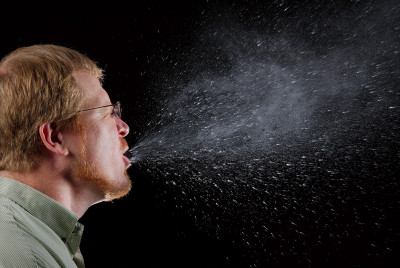What Is the Role of Aerosols in the Transmission of SARS-CoV-2?
According to current knowledge, the Coronavirus is transmitted by direct contact, e.g. by speaking, coughing or sneezing. Both droplets and aerosols (very fine airborne liquid particles and droplet nuclei), which can float in the air for a long time, play a role in transmission, although the transition between the two forms is fluid. Which measures can reduce exposure to aerosols?
 Aerosols are very fine airborne liquid particles, which can float in the air for a long time. / Picture: © Wikimedia Commons / James Gathany, Public Domain, via Wikimedia Commons
Aerosols are very fine airborne liquid particles, which can float in the air for a long time. / Picture: © Wikimedia Commons / James Gathany, Public Domain, via Wikimedia Commons
By keeping a distance of at least 1-2 meters, exposure to droplets and, to a certain extent, aerosols can be reduced.
Transmission of SARS-CoV-2 by aerosols is possible over greater distances in certain situations, e.g. when many people gather in inadequately ventilated indoor spaces and there is increased production and accumulation of aerosols.
This happens especially when speaking with increasing volume, but also when singing or possibly during sports activities.
To what extent this can lead to transmission has not yet been conclusively investigated, but transmissions of COVID-19 have occurred in connection with choir rehearsals and in a fitness course, among other things.
In the context of the COVID-19 pandemic, it is therefore advisable to avoid such situations.
In general, aerosols can be depleted by regular ventilation or, in the case of ventilation systems, by an exchange of room air with a supply of fresh air (or by appropriate filtration) indoors.
Transmission of SARS-CoV-2 in the open air over distances of more than 1 - 2 meters and the avoidance of large crowds of people have not been described so far.
However, keeping a distance of at least 1 - 2 meters and avoiding large crowds is also recommended outdoors to minimize direct exposure to droplets and aerosols.



